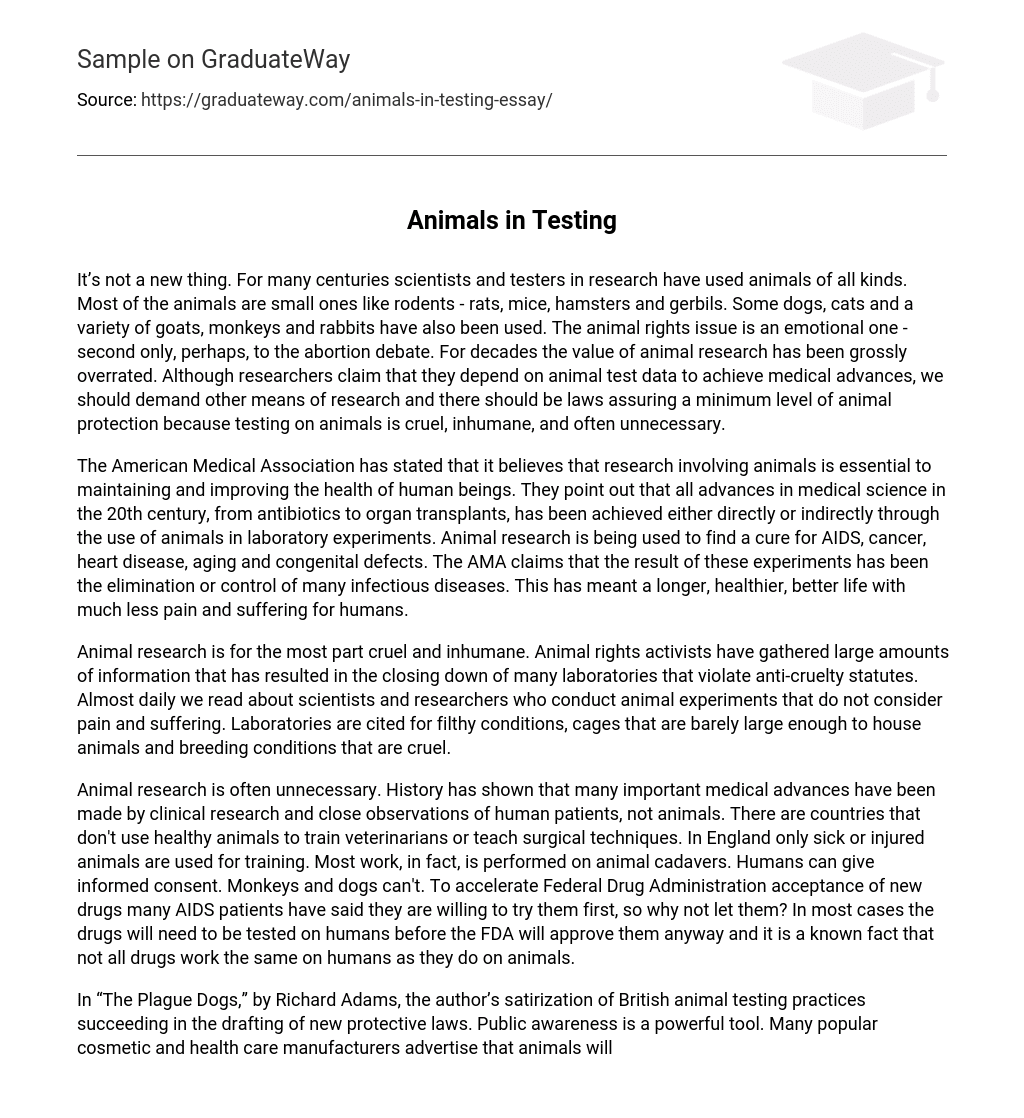It’s not a new thing. For many centuries scientists and testers in research have used animals of all kinds. Most of the animals are small ones like rodents – rats, mice, hamsters and gerbils. Some dogs, cats and a variety of goats, monkeys and rabbits have also been used. The animal rights issue is an emotional one – second only, perhaps, to the abortion debate. For decades the value of animal research has been grossly overrated. Although researchers claim that they depend on animal test data to achieve medical advances, we should demand other means of research and there should be laws assuring a minimum level of animal protection because testing on animals is cruel, inhumane, and often unnecessary.
The American Medical Association has stated that it believes that research involving animals is essential to maintaining and improving the health of human beings. They point out that all advances in medical science in the 20th century, from antibiotics to organ transplants, has been achieved either directly or indirectly through the use of animals in laboratory experiments. Animal research is being used to find a cure for AIDS, cancer, heart disease, aging and congenital defects. The AMA claims that the result of these experiments has been the elimination or control of many infectious diseases. This has meant a longer, healthier, better life with much less pain and suffering for humans.
Animal research is for the most part cruel and inhumane. Animal rights activists have gathered large amounts of information that has resulted in the closing down of many laboratories that violate anti-cruelty statutes. Almost daily we read about scientists and researchers who conduct animal experiments that do not consider pain and suffering. Laboratories are cited for filthy conditions, cages that are barely large enough to house animals and breeding conditions that are cruel.
Animal research is often unnecessary. History has shown that many important medical advances have been made by clinical research and close observations of human patients, not animals. There are countries that don’t use healthy animals to train veterinarians or teach surgical techniques. In England only sick or injured animals are used for training. Most work, in fact, is performed on animal cadavers. Humans can give informed consent. Monkeys and dogs can’t. To accelerate Federal Drug Administration acceptance of new drugs many AIDS patients have said they are willing to try them first, so why not let them? In most cases the drugs will need to be tested on humans before the FDA will approve them anyway and it is a known fact that not all drugs work the same on humans as they do on animals.
In “The Plague Dogs,” by Richard Adams, the author’s satirization of British animal testing practices succeeding in the drafting of new protective laws. Public awareness is a powerful tool. Many popular cosmetic and health care manufacturers advertise that animals will never be used for testing of their products. People should boycott companies that do not have a positive anti-animal testing policy. The power of the purse has oftentimes been much more persuasive than advertising by activists or even government regulation. Most of what we do to animals we would never do to people. We understand that people have certain rights that keep them from being experimented on by other people. What we don’t realize is that it is impossible to justify rights for humans, who are a type of animal, and deny rights to non-human animals. Animals have a right to life just as humans have a right to life. Human morality must expand to acknowledge and respect the rights of non-human animals.





